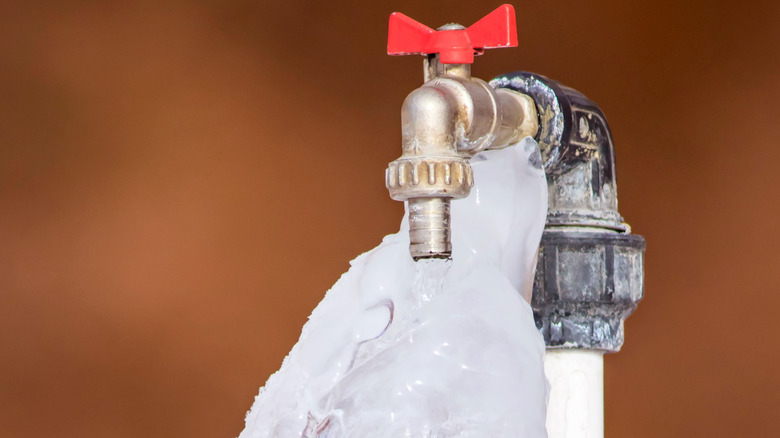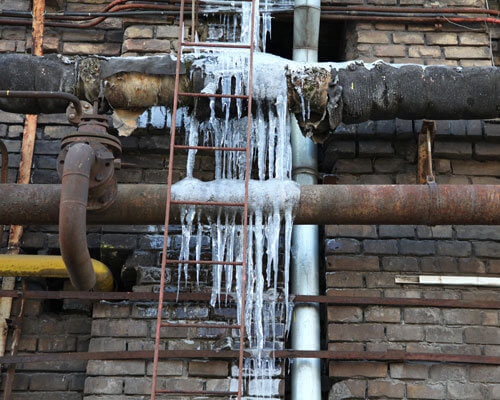Preventing Frozen Pipes: Effective Methods for Winter
Preventing Frozen Pipes: Effective Methods for Winter
Blog Article
Each person may have their private rationale about Preventing and dealing with frozen pipes.

Cold weather can wreak havoc on your plumbing, specifically by freezing pipes. Here's exactly how to prevent it from taking place and what to do if it does.
Intro
As temperatures decrease, the risk of frozen pipes increases, potentially resulting in costly repair services and water damage. Recognizing just how to stop icy pipes is vital for property owners in cool climates.
Prevention Tips
Insulating prone pipes
Cover pipelines in insulation sleeves or make use of warmth tape to shield them from freezing temperature levels. Concentrate on pipelines in unheated or external areas of the home.
Heating methods
Keep interior rooms adequately heated up, specifically areas with plumbing. Open cabinet doors to permit warm air to distribute around pipes under sinks.
Exactly how to identify frozen pipelines
Try to find decreased water circulation from taps, uncommon odors or sounds from pipelines, and noticeable frost on exposed pipelines.
Long-Term Solutions
Architectural changes
Consider rerouting pipes far from exterior wall surfaces or unheated areas. Add additional insulation to attics, cellars, and crawl spaces.
Upgrading insulation
Invest in high-grade insulation for pipelines, attics, and walls. Correct insulation aids keep regular temperature levels and decreases the threat of frozen pipelines.
Securing Outdoor Plumbing
Yard hose pipes and outside faucets
Detach and drain pipes garden hose pipes prior to winter months. Set up frost-proof spigots or cover outdoor taps with insulated caps.
Recognizing Icy Pipelines
What triggers pipes to freeze?
Pipelines ice up when revealed to temperature levels below 32 ° F (0 ° C) for expanded durations. As water inside the pipes ices up, it increases, putting pressure on the pipe walls and possibly triggering them to rupture.
Risks and damages
Icy pipes can lead to water system disruptions, property damages, and pricey fixings. Ruptured pipelines can flood homes and trigger substantial architectural damage.
Signs of Frozen Piping
Identifying frozen pipes early can avoid them from breaking.
What to Do If Your Pipes Freeze
Immediate activities to take
If you suspect frozen pipes, maintain faucets open up to relieve pressure as the ice thaws. Make use of a hairdryer or towels soaked in hot water to thaw pipelines slowly.
Conclusion
Stopping frozen pipes needs positive procedures and quick actions. By comprehending the reasons, indications, and safety nets, home owners can secure their plumbing throughout winter.
5 Ways to Prevent Frozen Pipes
Drain Outdoor Faucets and Disconnect Hoses
First, close the shut-off valve that controls the flow of water in the pipe to your outdoor faucet. Then, head outside to disconnect and drain your hose and open the outdoor faucet to allow the water to completely drain out of the line. Turn off the faucet when done. Finally, head back to the shut-off valve and drain the remaining water inside the pipe into a bucket or container. Additionally, if you have a home irrigation system, you should consider hiring an expert to clear the system of water each year.
Insulate Pipes
One of the best and most cost-effective methods for preventing frozen water pipes is to wrap your pipes with insulation. This is especially important for areas in your home that aren’t exposed to heat, such as an attic. We suggest using foam sleeves, which can typically be found at your local hardware store.
Keep Heat Running at 65
Your pipes are located inside your walls, and the temperature there is much colder than the rest of the house. To prevent your pipes from freezing, The Insurance Information Institute suggests that you keep your home heated to at least 65 degrees, even when traveling. You may want to invest in smart devices that can keep an eye on the temperature in your home while you’re away.
Leave Water Dripping
Moving water — even a small trickle — can prevent ice from forming inside your pipes. When freezing temps are imminent, start a drip of water from all faucets that serve exposed pipes. Leaving a few faucets running will also help relieve pressure inside the pipes and help prevent a rupture if the water inside freezes.
Open Cupboard Doors
Warm your kitchen and bathroom pipes by opening cupboards and vanities. You should also leave your interior doors ajar to help warm air circulate evenly throughout your home.

Do you appreciate reading about How to prepare your home plumbing for winter weather? Try leaving a remark below. We will be delighted to hear your thinking about this review. Hoping that you visit us again before long. Please take a moment to promote this write-up if you enjoyed reading it. We treasure your readership.
View More Report this page